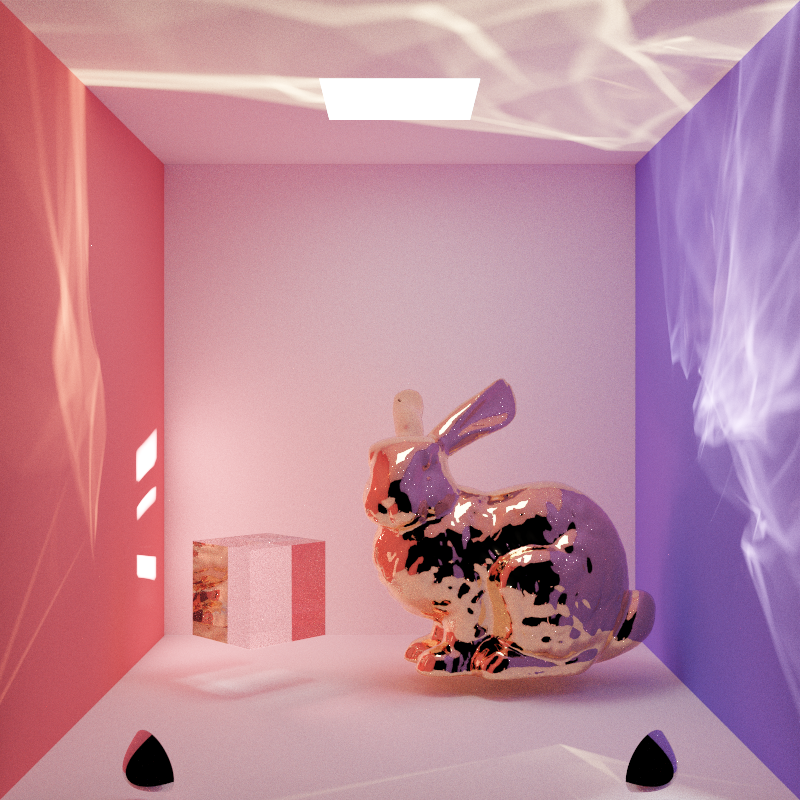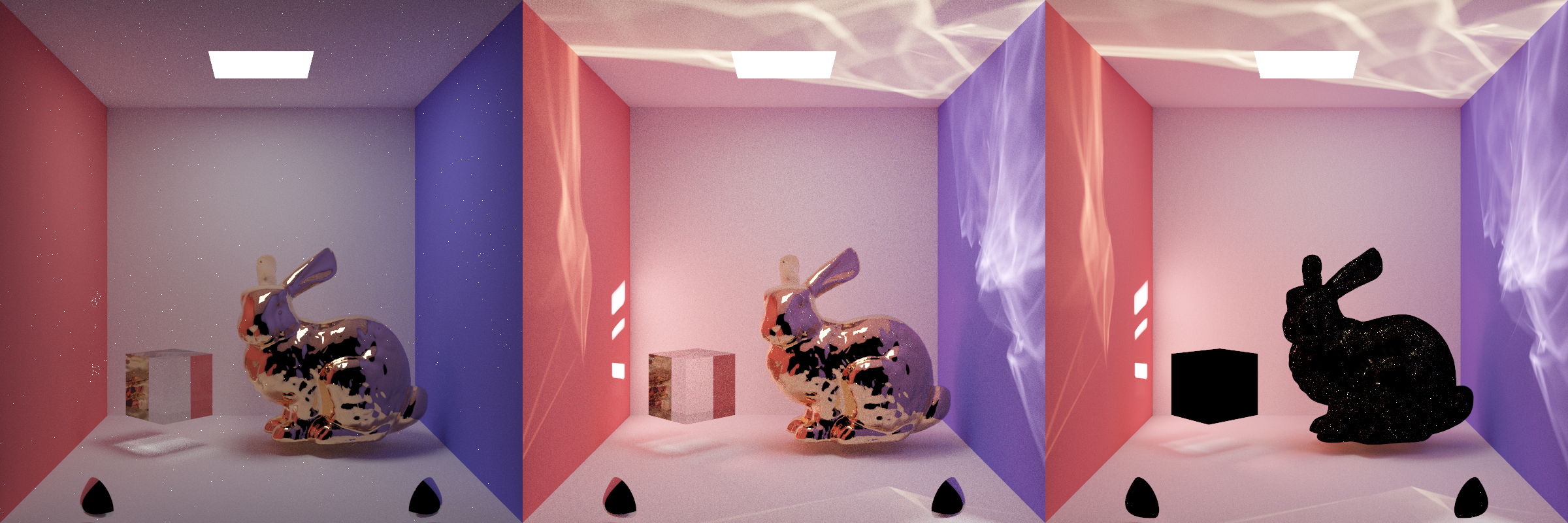 Beautiful caustics. This image took about 100 minutes to render
Beautiful caustics. This image took about 100 minutes to render
 Unweighted contribution, MIS weight (power heuristic), and weighted contribution
Unweighted contribution, MIS weight (power heuristic), and weighted contribution
The visualized MIS weights supported my earlier hypothesis that direct caustics in BDPT is mostly contributed by light tracing (t=1 case). And to my surprise, it even contributes considerably to indirect illumination of diffuse surfaces.
 Comparison with path tracing and light tracing. Each rendered in 20 minutes, with fixed tracing depth=10
Comparison with path tracing and light tracing. Each rendered in 20 minutes, with fixed tracing depth=10
While BDPT can handle LS+DE and LDS+E paths, which path tracer and light tracer cannot handle respectively, SDS paths still remains an obstacle: the walls which appear in bunny's specular surface do not have caustics! (first S: bunny's surface, second S: delta light. By the way, I didn't actually implement delta light, I used a tiny area light and a paraboloid mirror to approximate one)
Maybe the solution to rendering SDS paths lies in density estimation methods, so it's time to learn more about the photon mapping family...